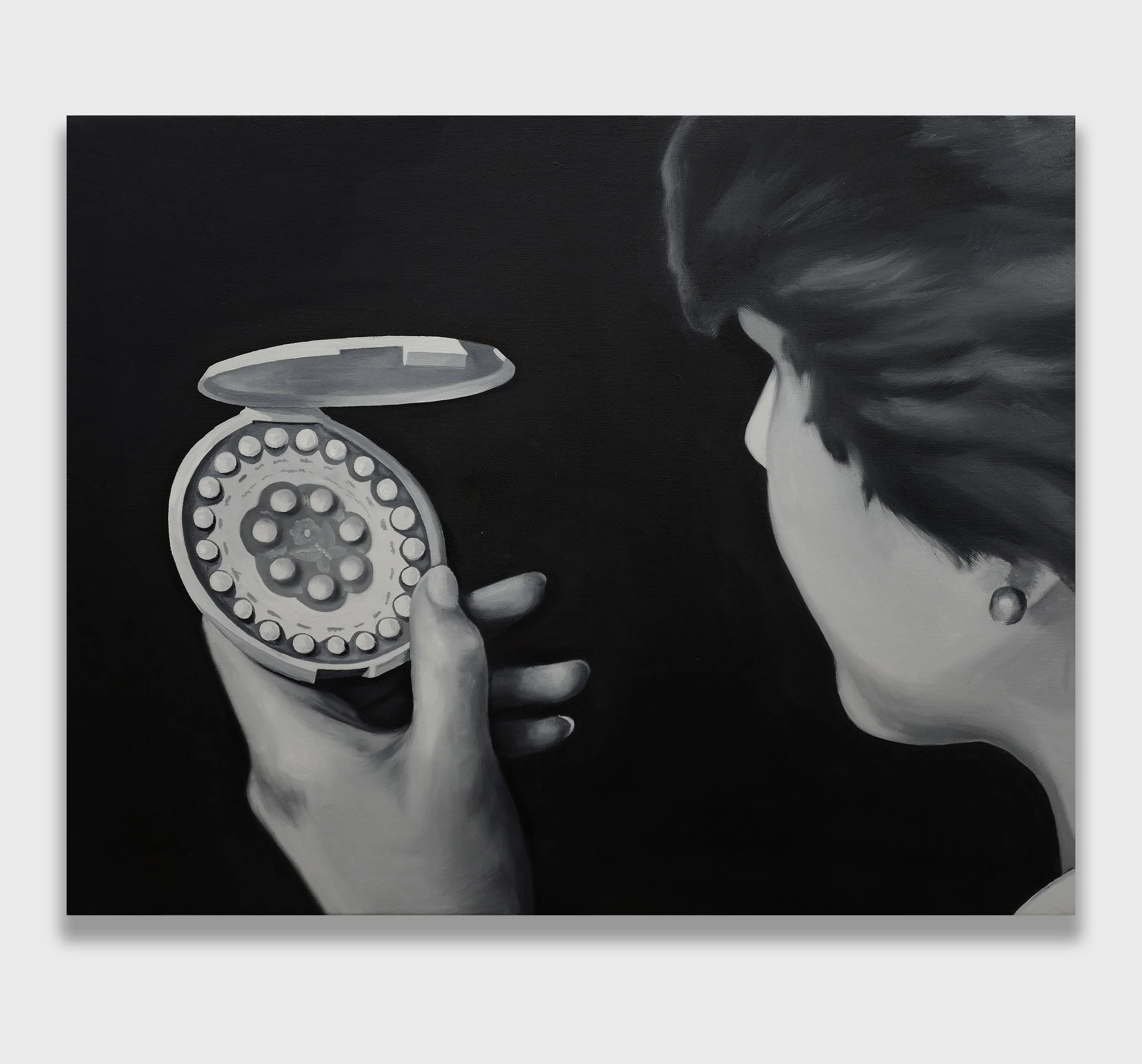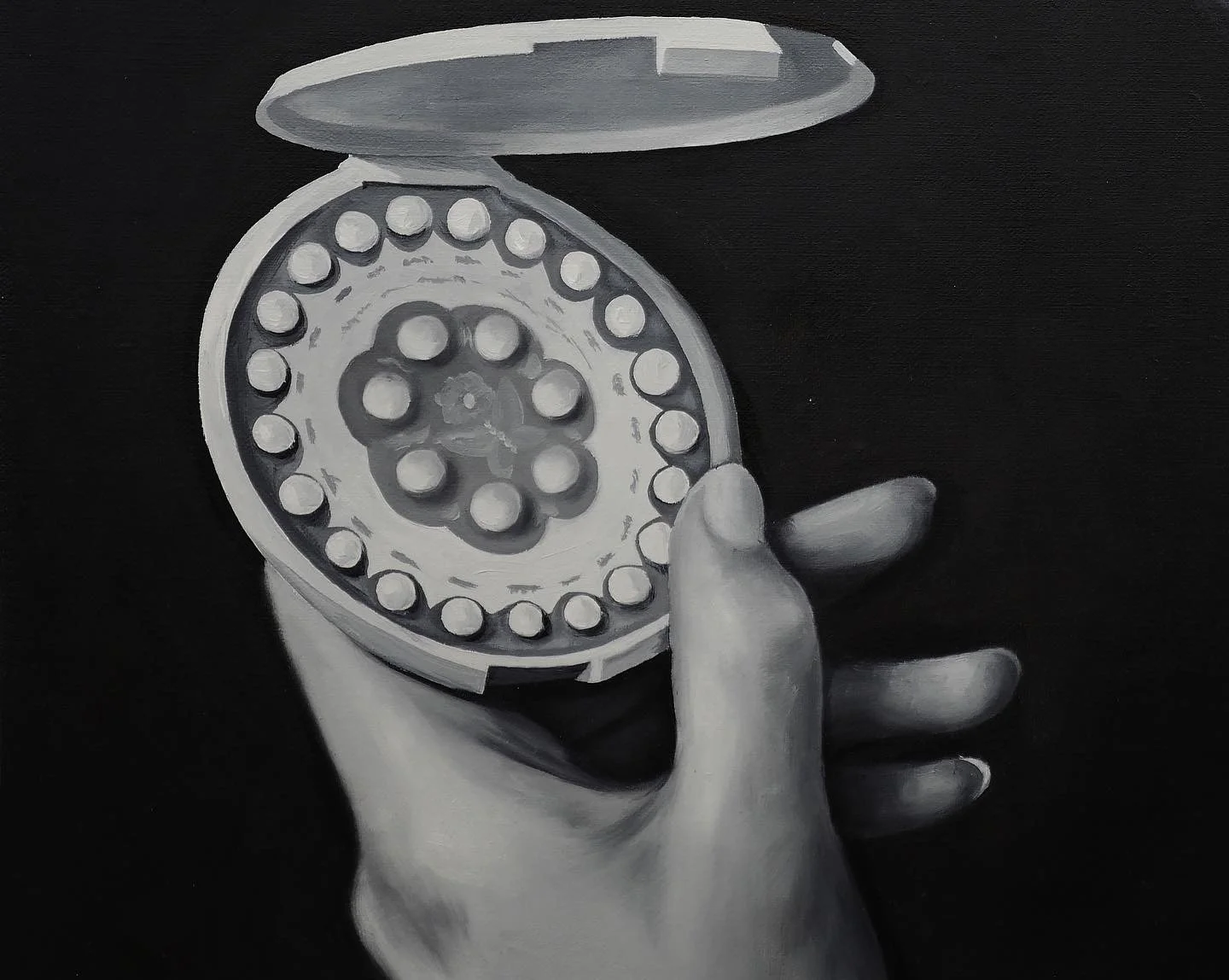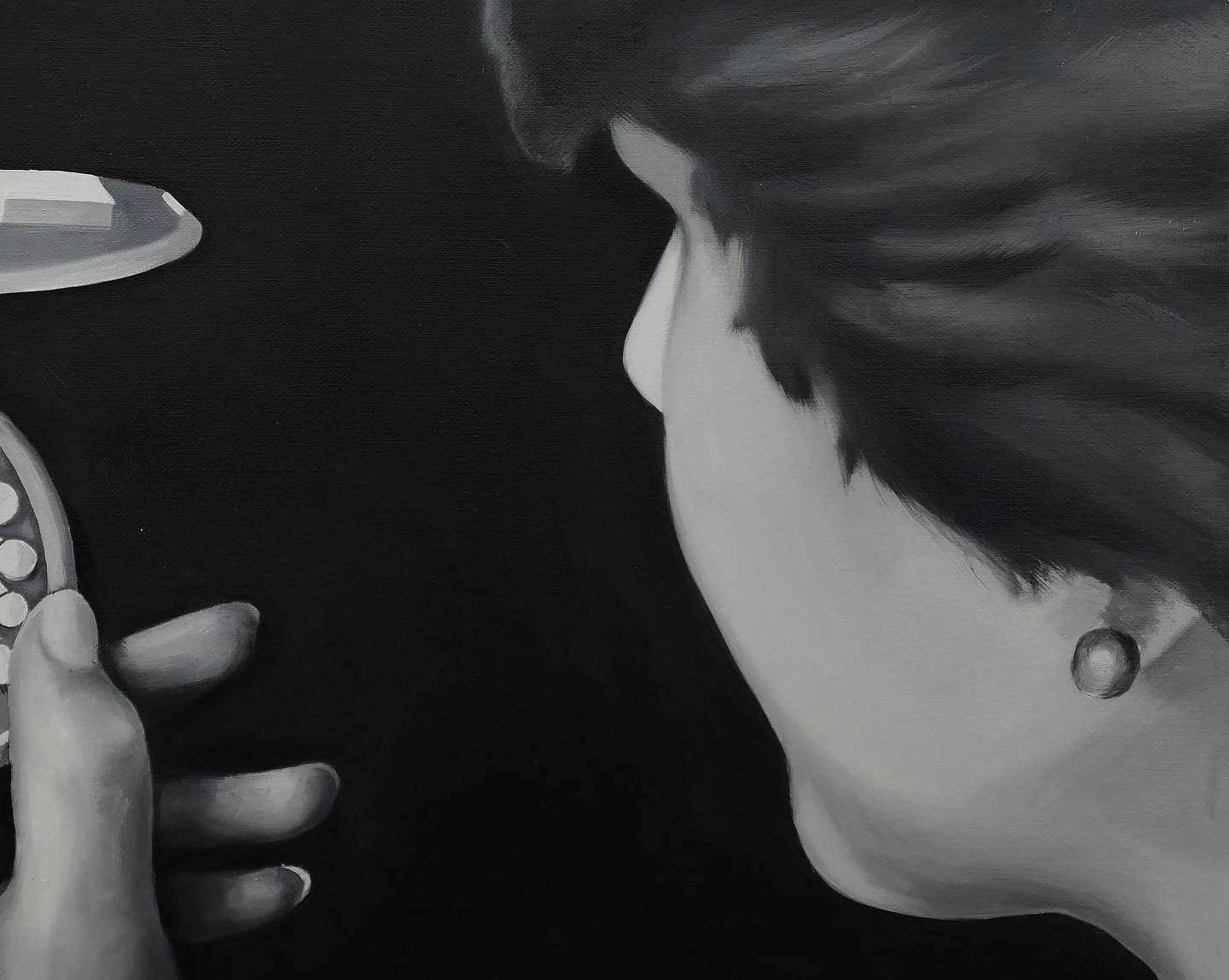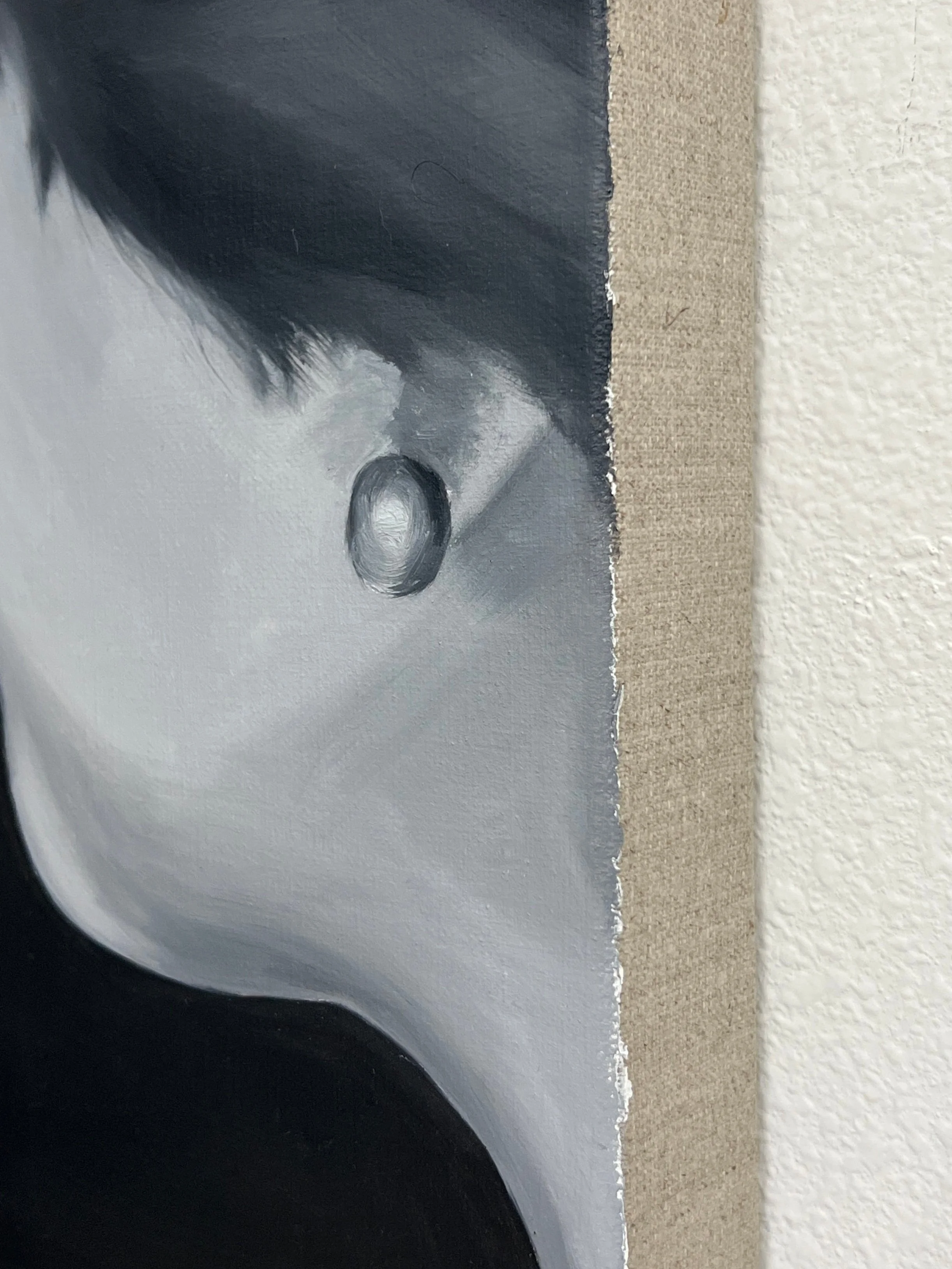The Pill, 2021
The Pill, 2021
Oil on linen
41 x 51 cm (16 x 20 in)
The Pill (2021) delves into the profound cultural shift triggered by the FDA's approval of the contraceptive pill in May 1960, a milestone that arguably had a more significant impact on American society than any other drug in the nation's history. This groundbreaking development liberated women, enabling them to pursue careers, fueling the feminist and pro-choice movements, and fostering more open attitudes towards sex. The creation of the Pill was driven by an unlikely coalition of visionaries: two elderly female activists who, advocating for a contraceptive women could consume as easily as aspirin, financed the crucial scientific research; a devout Catholic gynecologist who championed the Pill as a natural form of birth control, believing that a healthy sex life was essential for a strong marriage; and a brilliant biologist who pushed a pharmaceutical company to risk a potentially crippling boycott to develop this revolutionary contraceptive. By focusing on the open pillbox and the woman's profile, The Pill encapsulates the formidable obstacles these pioneers faced, presenting a compelling narrative of a society in transition.
Q: Your work The Pill (2021) depicts early birth control pill advertisements. Could you talk about the background and inspiration behind this piece?
Tan Mu: The inspiration for this work comes from the early designs of birth control pill advertisements. The first birth control pills were shaped like a disc, similar to a compact or makeup case, with a month’s worth of pills arranged around the perimeter. This design was not only practical for use but also aimed to make the product appear more approachable and socially acceptable in public advertising. The invention of the birth control pill had a profound impact on the transformation of women’s social identity, especially in the 1970s. With the rise of feminism, the widespread availability of birth control allowed women to better control reproduction, granting them greater equality in the workplace and society.
Q: Did this work connect with any of your other pieces?
Tan Mu: Yes, at the time I was working on several pieces simultaneously, including IVF and Embryo. These works all relate to fertility and technological control. From IVF (in vitro fertilization) to the birth control pill, technology is reshaping how we control reproduction and conception. The pill uses hormones to regulate fertility, while IVF assists conception through technological means. These works together form my exploration of how technology alters human reproduction and social structures. The invention of the birth control pill was not only a technological breakthrough but also a social revolution. It enabled women to control their reproductive lives more effectively, allowing them greater autonomy in both the workplace and society. This invention is closely linked to the rise of feminism and contributed to the progress of movements like equal pay and gender equality. Over 50 years ago, the birth control pill changed women’s social status, and today, we may be at the cusp of new technological breakthroughs, such as artificial intelligence or gene editing, which could have similarly profound impacts on society in the coming decades. Through this piece, I aim to document the far-reaching effects of this technological breakthrough on social structures and provoke reflection on how technology continues to reshape society.
Q: You mentioned that the design of the birth control pill shares similarities with logic circuits and the shape of embryos. Could you explain this further?
Tan Mu: Logic Circuit is another work from the same period, and indeed, the disc design of the birth control pill shares some visual similarities with the circular structure of logic circuits and the form of embryos. This resemblance intrigued me because it suggests the complex interrelationship between technology, nature, and human life. Whether it's the hormonal control in birth control pills, the information processing in logic circuits, or the origins of life in embryos, all of them illustrate how humans intervene in natural processes through technology. This connection fascinated me during the creation process.




